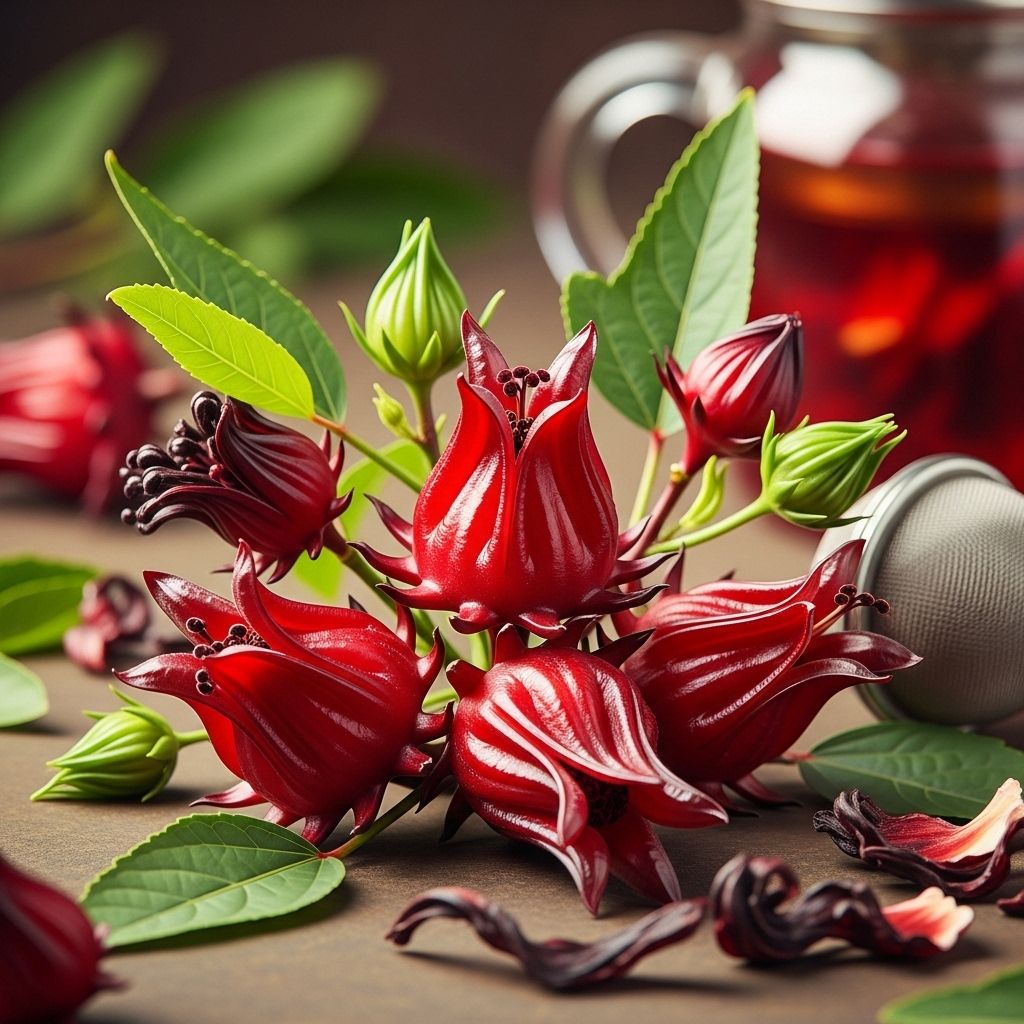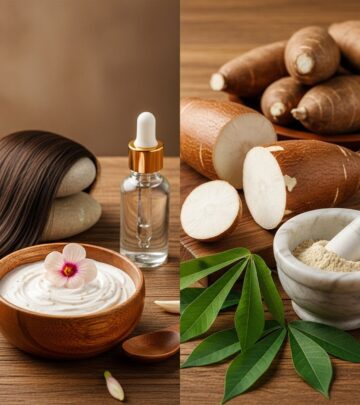The Power of Hibiscus Sabdariffa as a Natural Remedy for Hypertension
Explore how Hibiscus sabdariffa can help manage hypertension naturally, with a deep dive into scientific research and safe integration strategies.

The Power of Hibiscus Sabdariffa: A Natural Remedy for Hypertension
High blood pressure (hypertension) is a leading health risk worldwide, causing significant complications including heart attack, stroke, and kidney disease. While conventional medications remain a cornerstone of treatment, interest in natural and complementary remedies has soared. Among these, Hibiscus sabdariffa stands out for its promising blood pressure-lowering effects, making it a compelling candidate for those seeking alternative or adjunctive hypertension management.
Understanding Hypertension and Its Global Impact
Hypertension affects hundreds of millions globally. Often dubbed the “silent killer,” it can go unnoticed for years while damaging vital organs. Long-term high blood pressure increases risks for serious health conditions, such as:
- Heart disease
- Stroke
- Kidney damage
- Vision loss
Managing hypertension usually includes lifestyle modifications (such as dietary changes, exercise, and weight loss) alongside prescription medications. However, many individuals seek natural options for various reasons—personal preferences, medication side effects, or an interest in holistic health.
About Hibiscus Sabdariffa
The Hibiscus sabdariffa plant, also known as Roselle or “sour tea,” is native to West Africa and celebrated for its bright red calyces. These are traditionally used to prepare teas and extracts reputed for their health-promoting properties. In various cultures, Hibiscus drinks are consumed both as a daily refreshment and a folk remedy for a range of maladies, most notably elevated blood pressure.
Phytonutrients and Bioactive Compounds
The health benefits of Hibiscus arise from its richness in natural phytochemicals, including:
- Antioxidants (e.g., anthocyanins, flavonoids)
- Organic acids
- Polysaccharides
These compounds are concentrated in the plant’s calyces, the part typically used for making tea. They are not only responsible for its vibrant color and tart flavor but also for its pharmacological effects.
The Science: Research on Hibiscus and Blood Pressure
An expanding body of scientific research, including systematic reviews and meta-analyses, has investigated the blood pressure-lowering effects of Hibiscus sabdariffa. Key findings include:
- Randomized controlled trials show that daily consumption of Hibiscus tea can reduce both systolic and diastolic blood pressure in patients with mild-to-moderate hypertension .
- Comparative studies suggest the effectiveness of Hibiscus may be on par with some conventional antihypertensive medications, particularly in select populations .
- Researchers attribute the hypotensive effect to antioxidants and organic acids, which promote the relaxation of blood vessels and reduce oxidative stress .
Key Study: Efficacy of Hibiscus sabdariffa
Meta-analyses synthesizing data from several randomized controlled trials provide strong evidence for the efficacy of Hibiscus sabdariffa in lowering blood pressure. The results consistently show a statistically significant reduction in systolic (the top number) and diastolic (the lower number) blood pressure among participants who consumed Hibiscus preparations compared to placebo groups.
Hibiscus sabdariffa vs. Conventional Medications
| Parameter | Hibiscus sabdariffa | Conventional Antihypertensives |
|---|---|---|
| Efficacy (BP Reduction) | Comparable in mild-medium hypertension | High, especially in moderate-severe cases |
| Side Effects | Generally mild, rare | Can include dizziness, cough, electrolyte issues |
| Accessibility | Widely available, affordable | Prescription required, variable cost |
| Preference | Natural/holistic, dietary supplement | Evidence-based, rapid effect |
How to Use Hibiscus as a Natural Remedy
Forms of Hibiscus for Consumption
The most common and accessible way to incorporate Hibiscus sabdariffa into your routine is via hibiscus tea, made by steeping dried calyces in hot water. Other forms include powdered supplements, extracts, or adding dried hibiscus to recipes.
- Tea: Steep 1-2 teaspoons of dried hibiscus calyces in hot water for 5-10 minutes.
- Pre-portioned tea bags: Convenient, available in stores or online.
- Extracts and powders: Can be added to smoothies, yogurts, or other foods.
- Culinary uses: The tart, fruity flavor complements salads, sauces, jams, and desserts.
Preparation Tips
- For tea, use freshly boiled water and steep for at least 5 minutes to extract optimal flavor and bioactive compounds.
- Sweeten naturally with a small amount of honey if desired, but avoid excessive sugars that could counteract health benefits.
- Some enjoy hibiscus cold as an iced tea—simply chill after brewing.
Health Benefits Beyond Blood Pressure
Hibiscus sabdariffa is celebrated not only for its effect on hypertension but also for several ancillary health benefits attributable to its nutrient density:
- Rich in antioxidants, helping to neutralize free radicals and reduce oxidative stress.
- Supports heart and vascular health by improving cholesterol levels and endothelial function.
- May assist in anxiety reduction and promote general wellness.
Traditional Medicine Uses
Hibiscus is used in various traditional medicine systems for treating inflammation, digestive issues, and even supporting immune response, though most research focuses on its cardiovascular effects.
Safety and Considerations
While Hibiscus sabdariffa is generally recognized as safe for most adults, some important considerations apply:
- Contraindications: Avoid use if pregnant or breastfeeding due to limited safety research.
- Interactions: Hibiscus may moderately interact with certain antihypertensive medications, diuretics, or drugs processed by the liver. Always consult your healthcare provider if you are taking prescription or over-the-counter medications.
- Side effects: Rare, but may include mild stomach discomfort or diuresis (increased urination).
Never discontinue prescribed medication or make major changes to your hypertension management plan without medical guidance.
Recommended Dosage
- Most studies suggest 1–2 cups (240–480 ml) of hibiscus tea daily over several weeks yields best results for blood pressure reduction.
- Dried ground Hibiscus can also be used in culinary preparations—begin with small amounts to assess preference and tolerability.
Integrating Hibiscus Into a Comprehensive Hypertension Plan
Hibiscus sabdariffa works best as part of a holistic approach to cardiovascular health. Key strategies include:
- Balanced diet: Emphasize plant-based foods, healthy fats, and low sodium intake.
- Physical activity: Engage in regular exercise, such as brisk walking, cycling, or swimming.
- Weight management: Maintain a healthy body weight to further support blood pressure control.
- Stress reduction: Use relaxation techniques like meditation or yoga in conjunction with dietary remedies.
- Routine monitoring: Regularly check your blood pressure and consult healthcare providers for adjustments.
Frequently Asked Questions (FAQs)
Q: Is hibiscus tea safe for daily consumption?
A: Most adults can safely consume 1–2 cups of hibiscus tea daily. However, people taking antihypertensive medications, diuretics, or those with liver/kidney disorders should consult a healthcare provider first.
Q: How quickly does hibiscus lower blood pressure?
A: Clinical trials indicate noticeable reductions in blood pressure can be seen after several weeks of consistent consumption. It is not a rapid-acting remedy and works best with long-term use.
Q: Can I replace my blood pressure medication with hibiscus?
A: Do not stop or replace prescribed medications without speaking to your doctor. Hibiscus can be a helpful adjunct for some, but decisions about medication changes must always involve medical supervision.
Q: What does hibiscus tea taste like?
A: Hibiscus tea has a tangy, slightly fruity flavor that many describe as tart, similar to cranberry. It can be enjoyed hot or iced and sweetened lightly if desired.
Q: Are there other health benefits associated with hibiscus?
A: Yes, besides lowering blood pressure, hibiscus may help improve cholesterol levels, support liver health, and provide a rich source of antioxidants.
Conclusion
Hibiscus sabdariffa emerges as a promising natural remedy for managing mild to moderate hypertension, supported by scientific evidence and centuries of traditional use. Its incorporation into a healthy diet may provide meaningful benefits with minimal risk when used appropriately. As with all health interventions—especially those for chronic conditions—it is vital to consult with a qualified healthcare professional to ensure safety, effectiveness, and optimal integration with broader treatment plans.
References
- https://www.drjamesgaeta.com/blog/natural-remedy-for-hypertension/
- https://www.drjamesgaeta.com/blog/flaxseed-supplementation/
- https://www.drjamesgaeta.com/blog/prunes/
- https://www.drjamesgaeta.com
- https://connect.medicalnewstoday.com/provider/james-gaeta-1497793525
- https://pmc.ncbi.nlm.nih.gov/articles/PMC153424/
- https://www.drjamesgaeta.com/heart-health/
- https://www.youtube.com/channel/UCHvYsSlZFxRxBRi5xbPK1lA
Read full bio of Sneha Tete











